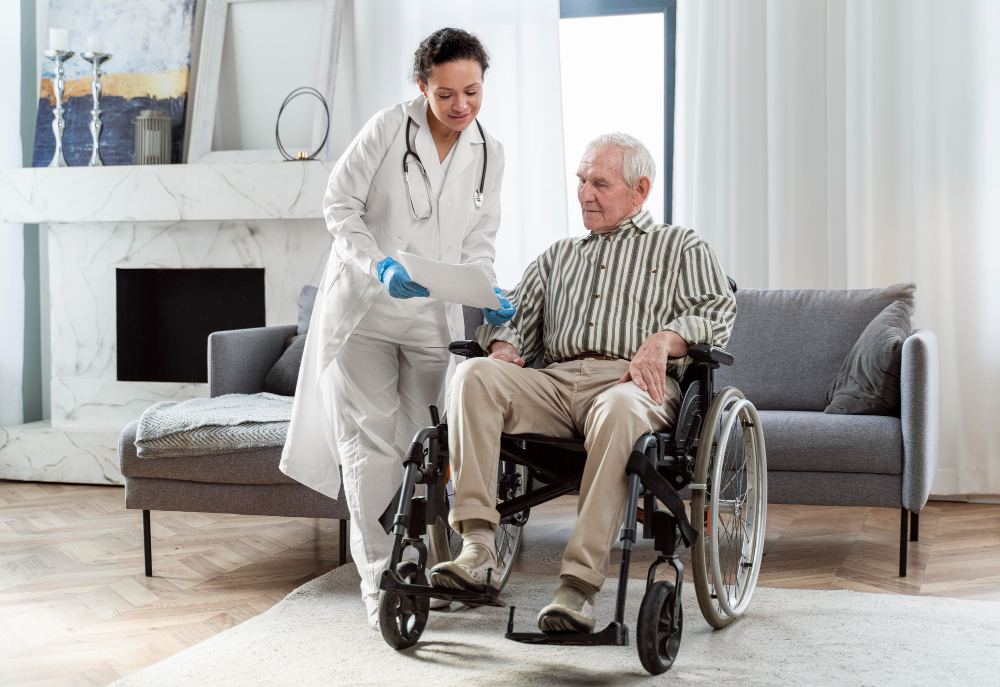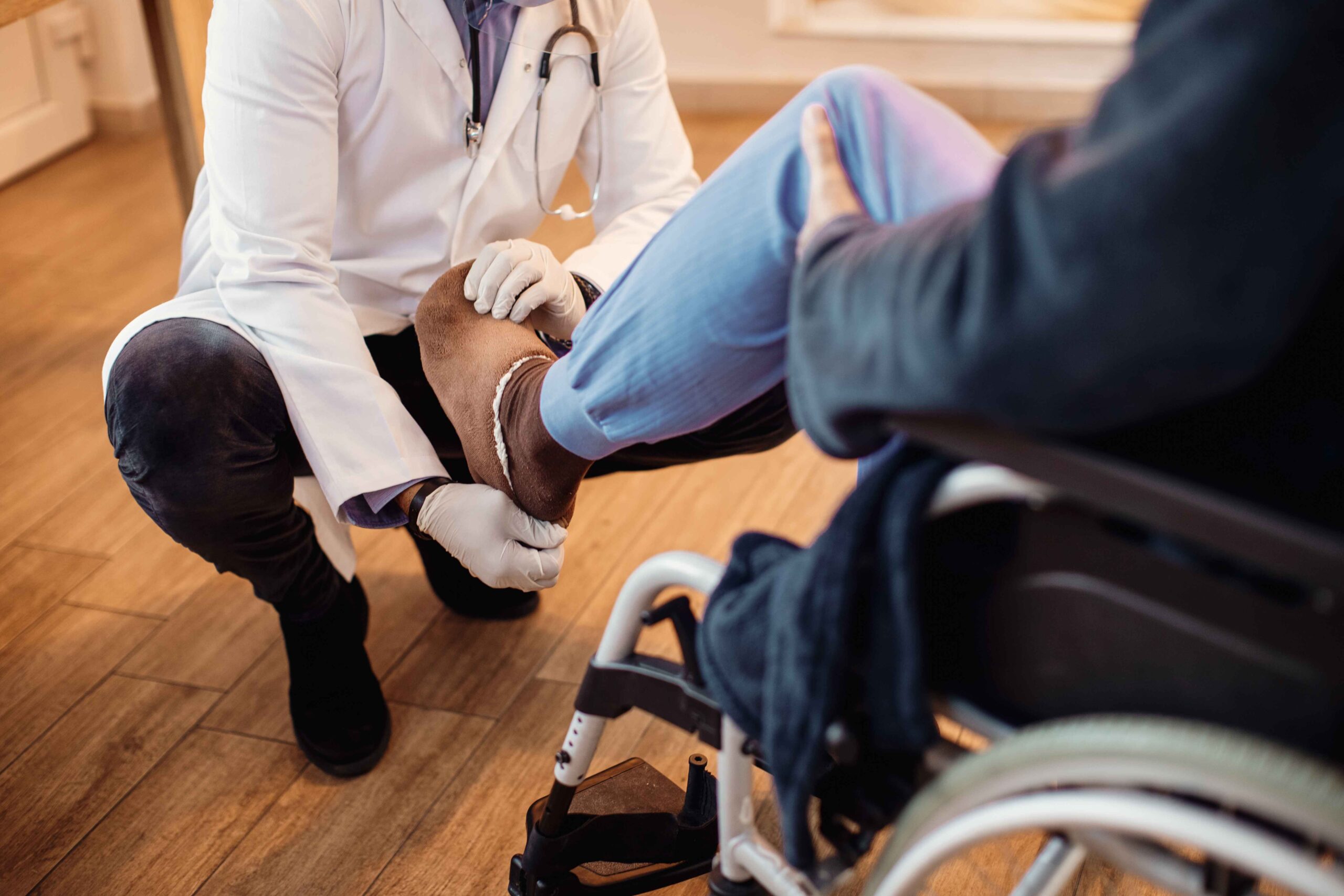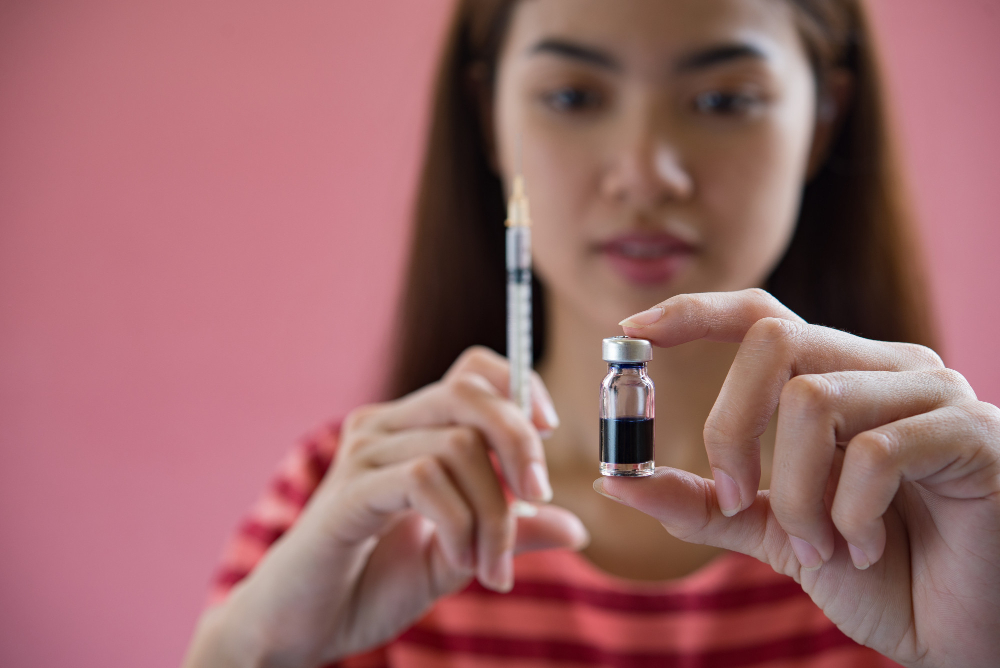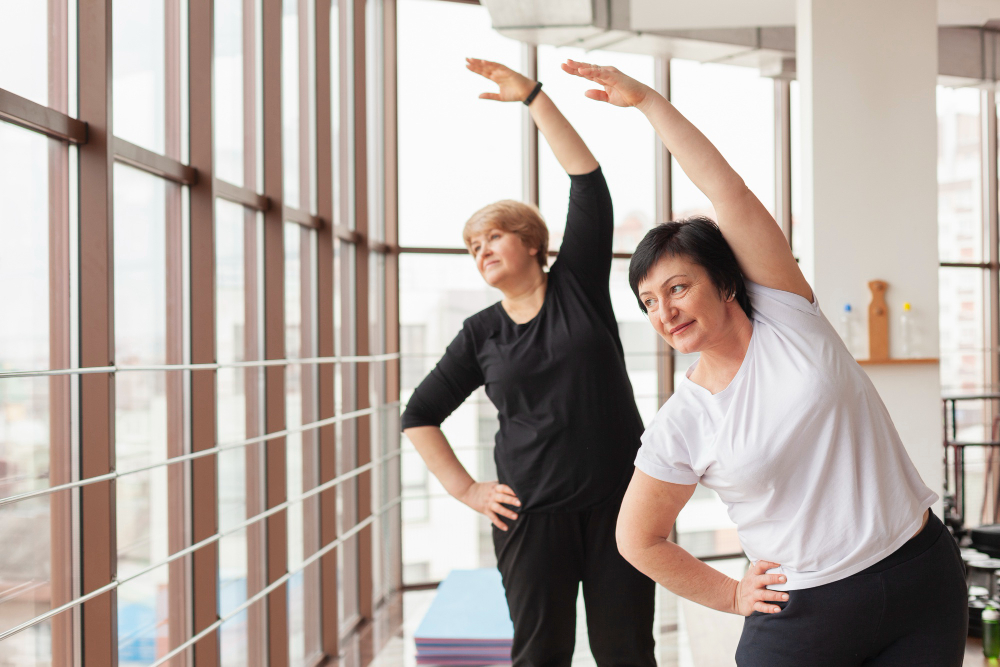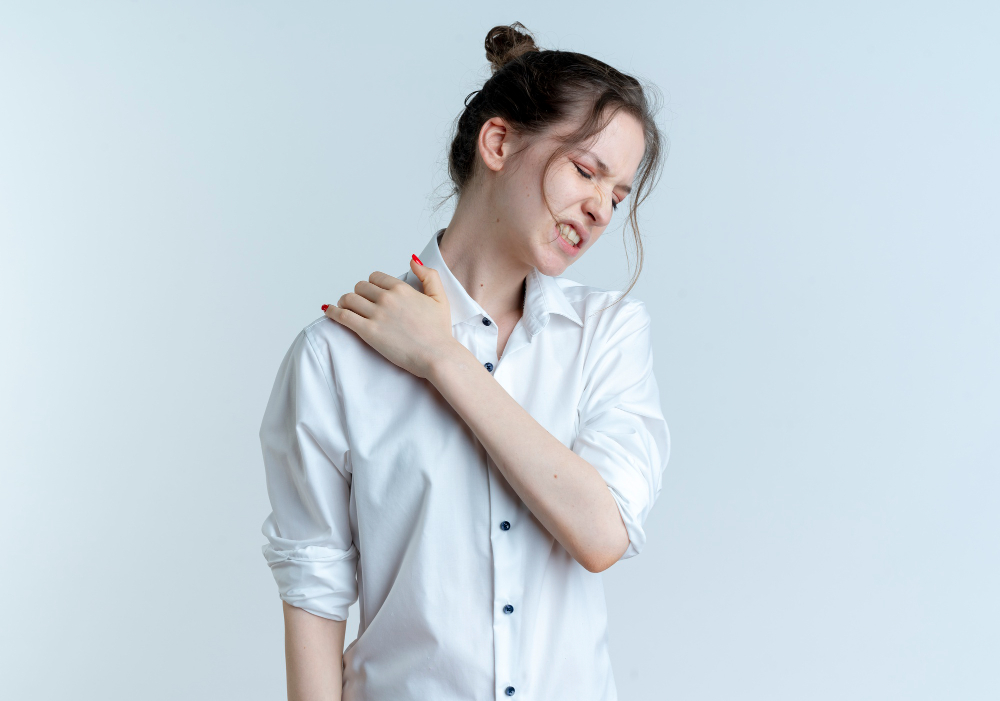
Last updated on by MRC
Recovering from a stroke often brings unexpected challenges. One of the most common and uncomfortable problems is shoulder pain after stroke, which is frequently caused by a condition called shoulder subluxation after stroke.
Think of your shoulder as a ball-and-socket joint. Shoulder subluxation simply means the “ball” (the top of your arm bone) has slightly slipped or is partially out of the socket. After a stroke, the muscles around the shoulder can become weak or paralyzed (what doctors call flaccid). Since these muscles can’t hold the arm up, gravity pulls the arm down, causing the joint to partially separate.
Preventing this painful “slipping” joint is a vital part of effective stroke rehabilitation. Early and consistent care can significantly reduce discomfort and improve your overall recovery.
These are 6 simple strategies—the core principles of physiotherapy for stroke patients—to help prevent the joint from slipping and manage shoulder pain after stroke.
The most important step is ensuring the affected arm is always supported—whether you are sitting, lying down, or standing. Letting the arm hang down freely puts strain on the joint and is the main cause of the slip.
Sitting (Chair/Wheelchair): Use a lap tray, arm trough (a type of armrest), or soft pillows to keep the arm supported. The shoulder should be level, and the elbow, wrist, and hand should be rested and slightly elevated. Never let the arm dangle.
Lying Down (Bed): Use pillows to cradle the entire arm and hand. If you lie on your back, place a pillow under the forearm to keep the shoulder comfortable. Your physical therapist will show you the correct positions for all sleeping arrangements.
Caregivers and family members must be trained on how to move and assist the patient without putting stress on the shoulder. Crucially, never pull on the affected arm when helping a stroke survivor move, transfer, or dress.
Avoid Pulling: When assisting with transfers (like moving from the bed to a chair), support the patient by holding them around their waist or by supporting the stronger side.
Dressing: When putting on a shirt, always slide the sleeve onto the affected (weaker) arm first. When taking it off, remove the shirt from the unaffected (stronger) arm first. This technique minimizes strain on the vulnerable shoulder.
Especially in the early stages when the arm is weakest, your therapist may recommend a specific type of support device to manage the arm’s weight and prevent the joint from slipping further.
Slings and Braces: Work closely with your stroke rehabilitation team to choose the best device. Some older slings (like simple triangular ones) can be unhelpful because they may cause the arm to bend too much or promote stiffness. Newer, specialized supports or braces that hold the arm up securely are usually better for correcting the shoulder subluxation.
Taping (Kinesio Taping): A therapist may apply special elastic tape to the shoulder. This tape helps give the joint extra support and acts as a gentle reminder to the muscles to stay engaged.
Moving the joint is important to prevent stiffness (known as a “frozen shoulder“), but these movements must be done carefully to avoid injury.
“No High-Up Movements”: Never raise the affected arm straight up over 90 degrees (level with your shoulder) without your therapist’s explicit instructions and technique. If the arm is moved too high without the shoulder blade rotating properly, it can pinch the soft tissues, leading to inflammation and severe shoulder pain.
Passive Range-of-Motion (ROM): A caregiver or therapist will gently move the arm and shoulder for you. They are trained to move the arm in a way that keeps the shoulder blade stable, protecting the joint.
This is a modern therapy often used in physiotherapy for stroke patients that can be very helpful in preventing and treating the slipped joint.
How it Works: Small electrical pads are placed over the weak shoulder muscles. A gentle, controlled electrical current is applied to make the muscles contract. This action helps “pull” the arm bone back into its proper position in the shoulder socket.
The Goal: By stimulating and strengthening these stabilizing muscles (like the rotator cuff muscles), it reduces the likelihood of further shoulder subluxation.
The stability of your shoulder starts with your core and back. A slouched posture makes the problem worse by allowing your shoulder blade (scapula) to droop forward.
Sit Up Straight: Always try to sit tall, with your weight balanced evenly on both hips. Your physical therapist will teach you exercises to strengthen the muscles in your trunk and back. Good posture naturally pulls the shoulder blade back and up, giving the arm joint a much better base of support.
Preventing and managing shoulder pain after stroke and shoulder subluxation requires expert care and guidance.
At Medical Rehabilation Center (MRC), a leading stroke rehabilitation centres in Kolkata with years of experience in pain management, we specialize in comprehensive stroke rehabilitation and pain management hospital in Kolkata, with best possible outcome.
Our experienced team of specialists provides personalized shoulder subluxation treatment and uses all these simple, yet vital strategies—from caregiver education and proper arm support to advanced therapies like electric stimulation.
Don’t let shoulder pain after stroke become a roadblock in your recovery.
Contact MRC today to learn more about our tailored rehabilitation programs and take a step towards a pain-free, functional life!
